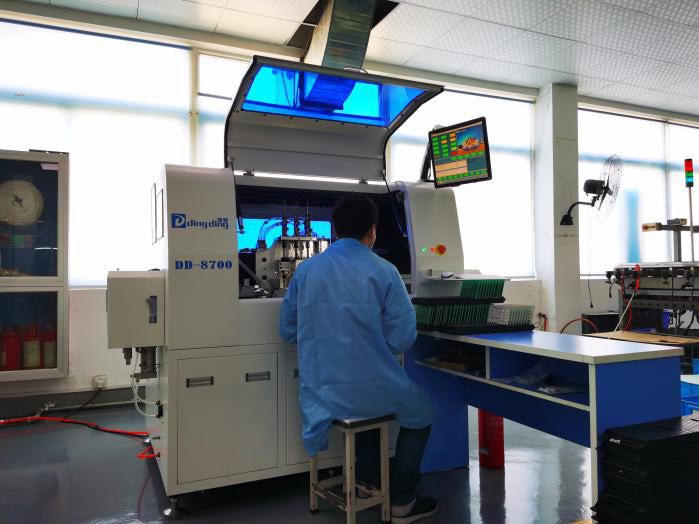1.Printing Press:

It is divided into manual and automatic plates. Red glue and solder paste are left on each component slot on the PCB original plate for fixing the following components. Because printed boards largely eliminate large via holes or buried hole interconnection technology, wiring density on printed boards is increased, and printed board area is reduced. The rapid development of screen printing has injected vitality into this industry and brought about major changes to the electronic industry. The current screen printing process can fully adapt to high-density PCB production.
2.Chip mounter

The chip mounter is to accurately place the pasting elements in the corresponding positions, then glue them with the red glue and solder paste coated in the first process, and then fix the pasting elements on the printed circuit board through the reflow oven. Chip mounter is a kind of equipment that can mount components at high speed and with high precision. At the same time, it is also the most critical and complex equipment in the chip production line. Now, the mounter has developed from the early low-speed mechanical mounter to the high-speed optical centering mounter, and has developed into a multifunctional flexible connection module.
3.Reflow soldering

Reflow soldering is to place the PCB board with components attached on it into the track inside the machine. After heating, heat preservation, welding, cooling and other links, solder paste changes from paste to liquid at high temperature and then to solid after cooling, thus realizing the function of soldering the electronic components with the PCB board. The equipment has the functions of high production efficiency, few welding defects and stable performance, and is an important welding equipment in PCBA processing plants.
4.Horizontal plug-in machine

Horizontal plug-in machine is a machine that automatically installs electronic components on printed circuit boards according to procedures. The traditional electronic assembly industry mainly relies on manual insertion of electronic components on circuit boards. Since machines began to be produced on a large scale, the defects of slow manual plug-ins and poor workmanship have been exposed. Using the plug-in machine to automatically install the electronic components on the circuit board can save labor costs and improve the plug-in technology level. The operation of the plug-in machine basically includes such components as capacitors, inductors, resistors, diodes, jumpers, etc. The engineers in the design process will divide the plug-in parts of each station according to the workload and rationality. Each machine is only responsible for installing several original parts, which is fast and efficient.
4*. Custom plug-in machine

Based on the completion of the mechanized plug-in, the PCB is customized. According to the customer’s requirements, personal tailor components are installed on the original basis, thus making the PCB unique. The machine is controlled by computer system, accurate and efficient, and is specially designed for customization.
5.Manual pre-processing equipment


By the time of this step, basically half of the PCB manufacturing process has been completed. On the basis of checking the previous process, the plastic service of PCB board is carried out. According to the customer’s requirements, such as the size of the board, size requirements, etc., then purely manual processing. So as to be more suitable for the needs of customers. Although there is no precision machined, it is more “emotional” and more efficient than machined
6.Wave soldering

Wave soldering is a technology that makes the surface of molten liquid solder form a solder wave with a specific shape by means of pump pressure. When the assembly with components inserted passes through the solder wave at a certain angle, solder joints are formed in the lead soldering area. In actual welding, it is usually necessary to control the preheating temperature of the assembly surface, so many equipment have added corresponding temperature detection devices (such as infrared detectors). The convection heat transfer principle is adopted to heat the welding area. The molten solder wave acts as a heat source, which flows to scour the pin solder area on the one hand, and also plays a role in heat conduction on the other. With the use of lead-free solders, double-wave form is currently widely used.
7.Testing equipment

Professional testing equipment. The testing items include open circuit test, short circuit test, resistance test, capacitance test, diode test, triode test, FET test, IC pin test and other common and special components such as missing assembly, mis-assembly, parameter value deviation, solder joint connection, circuit board open and short circuit and other troubleshooting. The equipment is small but its function is very huge, which saves unnecessary steps and manpower and improves the production efficiency of the whole assembly line.
